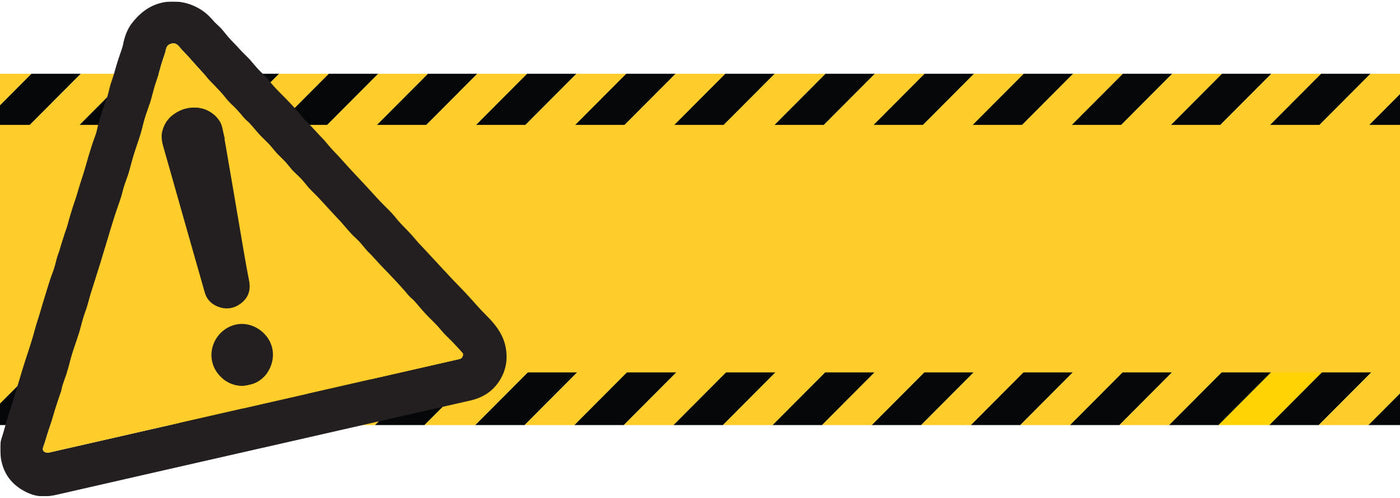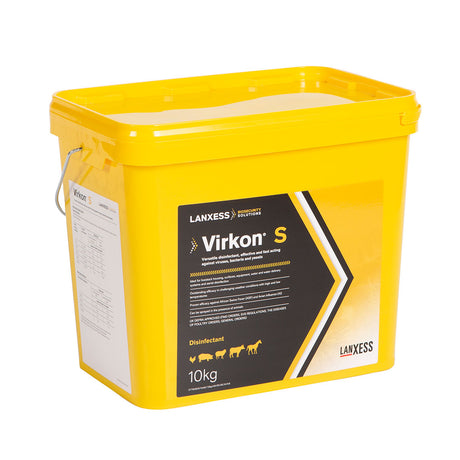Lessons from History: The 2001 Outbreak and Its Devastating Impact
The 2001 foot and mouth disease outbreak in the UK was one of the worst agricultural crises in modern British history. The scale was staggering - over 6 million animals were culled in an effort to contain the spread. Cumbria was hit hardest, with 893 confirmed cases, but the disease spread across most of the British countryside.
Beyond the immediate impact on animals, the outbreak created a human tragedy that still affects rural communities today. Farmers watched as entire herds built up over generations were destroyed. Many experienced severe psychological trauma, depression, and financial ruin. The countryside effectively shut down, with footpaths closed and tourism grinding to a halt.
The economic costs were enormous. According to the National Audit Office, the 2001 outbreak cost the public sector over £3 billion and the private sector more than £5 billion. Tourism suffered losses of around $4-5 billion as visitors stayed away from the countryside. The crisis demonstrated how an animal disease outbreak affects not just farmers but entire rural economies.
For many farmers who lived through it, the images of burning pyres of animals became the defining memory of 2001. The outbreak changed how Britain approaches disease control, leading to improved surveillance, stricter biosecurity measures, and new policies on vaccination versus culling.
The lesson from 2001 is clear: prevention is infinitely better than cure when it comes to foot and mouth disease. The cost of stringent biosecurity measures is nothing compared to the devastating impact of an outbreak.
How to Keep Foot and Mouth Disease Off Your Farm: Essential Biosecurity Steps
Keeping foot and mouth disease away from your farm requires a systematic approach to biosecurity. Here are the essential steps every livestock farmer should take:
Register Your Animals and Keep Records
Make sure all your livestock are properly registered with a Property Identification Code (PIC). Keep detailed records of animal movements, health treatments, and visitors to your farm. Good recordkeeping is crucial if a disease outbreak occurs, helping authorities trace contacts and contain the spread quickly.
Control Movement On and Off Your Farm
Restrict vehicle and visitor access to your property as much as possible. Have a designated parking area away from livestock. Create clear signage directing visitors to contact you before entering farm areas. Remember that the virus can be carried on vehicles, equipment, clothing, and footwear.
For essential visitors like vets or feed delivery drivers, create specific protocols they must follow. Consider using a visitor log to track who comes onto your property and when.
Isolate New Animals
Any new animals coming onto your farm should be quarantined for at least 28-30 days. This period equals two incubation periods for FMD, giving enough time for any symptoms to show. Keep new animals completely separate from your existing herd or flock during this time, with no shared water, feed, or equipment.
Maintain Clean Boundaries
Check your farm boundaries regularly to prevent contact between your animals and neighboring livestock. Double fencing with a gap of at least 3 meters can provide an effective barrier against nose-to-nose contact. Keep wild animals away from your livestock as much as possible.
Monitor Animal Health Daily
Check your animals daily for any signs of illness. Early signs of FMD include:
- Excessive drooling or foaming at the mouth
- Smacking lips, grinding teeth
- Reluctance to move or lameness
- Blisters on the mouth, tongue, lips, feet, or teats
- Sudden drop in milk production in dairy animals
- Loss of appetite
- Fever
If you notice any of these symptoms, isolate the affected animals immediately and call your vet. Early detection and reporting are crucial for containing an outbreak.
Train Your Staff
Make sure everyone who works on your farm understands biosecurity procedures and why they're important. Regular training sessions keep biosecurity at the forefront of everyone's minds and ensure protocols are followed consistently.
Farm Disinfection: Your First Line of Defense Against Foot and Mouth Disease
Proper disinfection is one of the most effective ways to keep foot and mouth disease off your farm. The FMD virus can survive for days or even weeks in the right conditions, making regular, thorough disinfection essential. Here's what you need to know:
Why Clean Before You Disinfect?
Many farmers miss this crucial step, but it's vital to know that most disinfectants simply won't work if surfaces are dirty. Mud, manure, and organic material can protect viruses from disinfectants, making them useless. Always thoroughly clean surfaces with detergent and water, then rinse before applying any disinfectant.
What Areas Need Regular Disinfection?
Focus your disinfection efforts on high-risk areas including:
- Entry points to your farm
- Areas where vehicles enter and leave
- Footwear and clothing change areas
- Equipment that moves between different parts of your farm
- Loading and unloading areas
- Feed storage areas
- Milking parlors and other high-traffic zones
Choosing the Right Disinfectant for Foot and Mouth Disease
Not all disinfectants are created equal when it comes to killing the FMD virus. The most effective options include:
- A powerful broad-spectrum disinfectant that kills the FMD virus in just 30 seconds. It's effective even in cold temperatures and when some organic material is present, making it particularly useful in farm environments.
- Very effective against FMD but highly caustic - use with extreme caution and appropriate protective equipment.
- A good option for large areas and is relatively safe to use.
- Effective and relatively safe, though not as powerful as some other options.
- Effective against FMD but corrosive to metals and can damage clothing and equipment.
Why Many UK Farmers Choose Virkon S
Virkon S has become the go-to disinfectant for many UK livestock farmers concerned about foot and mouth disease. It's been extensively tested against the FMD virus on different farm surfaces including concrete and stainless steel, with proven results. Governments worldwide have selected it for emergency disease control during outbreaks.
The advantages of Virkon S include:
- Fast-acting - kills the FMD virus in 30 seconds
- Effective in cold temperatures and farm conditions
- Works on a wide range of surfaces
- Relatively safe for users when used correctly
- Can be used for surfaces, equipment, vehicles, and foot dips
To use Virkon S effectively:
Mix it correctly according to the manufacturer's instructions - typically a 1% solution (100g per 10 liters of water)
- Apply to clean surfaces
- Allow adequate contact time
- Refresh solutions regularly - disinfectant in foot baths should be changed daily or when visibly contaminated
Setting Up Effective Disinfection Points
Boot dips and wheel baths are essential components of your farm's biosecurity system. However, they're only effective if set up and maintained properly:
For boot dips:
- Place them at entry points to different areas of your farm
- Make sure boots are clean before they go into the dip - brush off all visible mud and manure
- Ensure the disinfectant is at the correct concentration
- Make the dip deep enough to cover the sole and lower part of boots
- Change the solution regularly - at least daily
- Protect from rain to prevent dilution
- Keep a brush nearby for cleaning boots
For wheel baths:
- Make them long enough that tires go through at least one full rotation
- Ensure they're deep enough to disinfect the lower parts of vehicles
- Include a pre-washing area to remove mud and organic material
- Change solutions regularly
- Consider a pressure washer for heavily soiled vehicles
- Remember: A poorly maintained disinfection point is worse than none at all, as it can give a false sense of security while spreading contamination.
What to Do If You Suspect Foot and Mouth Disease on Your Farm
If you notice any symptoms that could indicate foot and mouth disease, acting quickly is crucial. Here's what to do:
Step 1: Isolate and Report
Immediately isolate any animals showing symptoms. Don't move any animals on or off your property. Call your veterinarian or the Animal and Plant Health Agency (APHA) immediately.
In England: 03000 200 301 In Scotland: 01224 337550 In Wales: 0300 303 8268
Be ready to describe the symptoms you've observed, how many animals are affected, and which species. Make it clear that you suspect foot and mouth disease - this will trigger an emergency response.
Step 2: Restrict Movement
While waiting for officials to arrive:
- Keep everyone away from affected animals
- Stop all movement of animals, people, vehicles, and equipment on and off your farm
- Set up disinfection points for essential movement
- Keep dogs, cats, and other animals away from livestock
- Stay away from other farms or areas with susceptible animals
Step 3: Prepare Records
Gather your farm records, including:
- Details of recent animal movements
- Visitor records
- Feed deliveries
- Recent animal health treatments
Contact details for neighbouring farms
This information will help officials trace potential spread if FMD is confirmed.
Step 4: Follow Official Instructions
If foot and mouth disease is confirmed, animal health officials will take control of the situation. They will implement a control plan that may include:
- Culling of affected and in-contact animals
- Establishing protection and surveillance zones
- Restrictions on animal movements
- Enhanced biosecurity and disinfection requirements
While these measures are severe, they're necessary to prevent wider spread of the disease. Cooperation with officials is essential and legally required.
Step 5: Look After Yourself and Your Team
A suspected or confirmed case of foot and mouth disease is extremely stressful. Don't neglect your own wellbeing and that of your family and staff. Support is available through:
- The Farming Community Network: 03000 111 999
- RABI (Royal Agricultural Benevolent Institution): 0800 188 4444
- Your local Rural Support Networks
- Your GP
How to Disinfect Your Farm Using Virkon S: A Practical Guide
Virkon S has proven extremely effective against foot and mouth disease and is widely used by farmers across the UK. Here's how to use it effectively on your farm:
Choosing the Right Concentration
For routine preventative disinfection, a 1% solution of Virkon S is recommended (100g per 10 liters of water). During a disease outbreak or for high-risk situations, increase to a 2% solution (200g per 10 liters).
The powder dissolves in water, turning it pink. When the solution fades to colorless, it needs replacing. Solutions typically remain active for 5-7 days, but should be changed more frequently in heavily used areas or if visibly contaminated.
Application Methods for Different Farm Areas
For large surface areas and buildings:
Use a pressure washer with a disinfectant attachment for applying to clean surfaces
- For routine disinfection, apply at a rate of 300ml/m²
- During high-risk periods, increase to 500ml/m²
- Ensure all surfaces are thoroughly wetted
- Allow to dry naturally for maximum effectiveness
For equipment and small items:
Use a hand sprayer for good coverage
- For items that can be immersed, prepare a dip tank with 1% solution
- Allow at least 10 minutes contact time
- Rinse food-contact surfaces with clean water after disinfection
For vehicles:
- Set up a dedicated washing and disinfection area
- Pre-clean with detergent and water to remove all visible dirt
- Pay special attention to wheel arches, undercarriage, and mud guards
- Apply disinfectant with a pressure washer or hand sprayer
- Allow vehicles to drain on a hard surface before leaving
For foot dips:
- Use robust, non-slip containers with lids to protect from rain
- Change solution daily or when visibly contaminated
- Place on concrete pads with good drainage to prevent environmental contamination
- Provide a brush for cleaning boots before dipping
- A 1% solution is sufficient for routine use
Safety Precautions When Using Virkon S
While Virkon S is safer than many other agricultural disinfectants, it's still a chemical that requires proper handling:
- Wear gloves when mixing and applying
- Use eye protection, especially when mixing powder
- Avoid inhaling dust when handling the powder - mix in well-ventilated areas
- Keep out of reach of children and animals
- Store in original container, tightly closed, in a cool, dry place
- Follow all instructions on the product label
Creating an Effective Farm Disinfection Plan
The most effective approach is to develop a written farm disinfection plan:
Map your farm - identify high-risk areas, entry points, and traffic patterns
Establish disinfection zones - decide where disinfection points should be located
Create a disinfection schedule - daily, weekly, and monthly tasks
Assign responsibilities - make it clear who is responsible for each task
Document procedures - write down exactly how each task should be done
Train everyone involved - ensure all staff understand why and how
Monitor and adjust - regularly check that procedures are being followed and make improvements
A good disinfection plan doesn't need to be complicated, but it does need to be consistent. Make it part of your daily farm routine, not just something you do when there's a disease threat.
The Wider Impact: Why Foot and Mouth Disease Affects More Than Just Farmers
Foot and mouth disease doesn't just affect farmers and their animals - it has far-reaching consequences for the entire rural economy and beyond.
Trade and Export Markets
The UK's status as "FMD-free without vaccination" is crucial for our export markets. If this status is lost due to an outbreak, export restrictions would be imposed immediately. During the 2001 outbreak, these restrictions cost the UK billions in lost trade. Regaining disease-free status takes months at a minimum, and during this time, markets remain closed.
For many farm businesses, export markets represent a significant portion of their income. An FMD outbreak could mean losing these markets overnight with no certainty about when they might reopen.
Rural Tourism and Local Businesses
The 2001 outbreak had a devastating impact on rural tourism. Footpaths were closed, events canceled, and visitors stayed away. Rural businesses like pubs, B&Bs, shops, and activity centers saw their income evaporate almost overnight. In fact, the economic impact on tourism (around $4-5 billion) was comparable to the direct costs to agriculture.
Today, with rural tourism even more important to many areas, the potential impact could be even greater. The restrictions necessary to control FMD would once again close off large parts of the countryside, affecting countless businesses that depend on visitors.
Food Supply and Prices
A major outbreak of foot and mouth disease would inevitably affect food prices and possibly supply. The culling of large numbers of livestock would reduce availability of meat and dairy products, potentially leading to higher prices for consumers. Import restrictions could further complicate the situation.
While the UK's food security is stronger than in 2001, any significant disruption to production would still have noticeable effects on consumers.
Mental Health and Community Impact
Perhaps the most overlooked consequence of the 2001 outbreak was its impact on the mental health of farmers and rural communities. Many farmers reported symptoms of post-traumatic stress disorder after watching their animals being culled. Social isolation increased as farm visits stopped and community events were canceled.
The trauma of 2001 still affects many farming families today. Another major outbreak would bring back painful memories and create new trauma for a new generation of farmers.
Conclusion: Protecting Your Farm is Protecting the Nation
Foot and mouth disease represents one of the most serious threats to UK livestock farming. The 2001 outbreak showed us just how devastating the impact can be - not just on animals and farms, but on rural communities, the wider economy, and the mental health of those affected.
Today, with FMD outbreaks confirmed in Europe and the risk level to the UK officially classified as "medium," every livestock farmer has a responsibility to implement robust biosecurity measures. These aren't just bureaucratic hoops to jump through - they're essential defenses that protect your animals, your livelihood, and the entire UK farming industry.
The good news is that we know what works. Proper disinfection, movement controls, vigilant monitoring, and rapid reporting of suspicious symptoms are proven strategies for preventing and containing outbreaks. Products like Virkon S provide effective tools when used correctly as part of a comprehensive biosecurity plan.
Remember:
- Clean before you disinfect
- Monitor your animals daily for symptoms
- Control movement on and off your farm
- Isolate new animals
- Report any suspicious signs immediately
- Keep your disinfection procedures consistent
By taking these steps now, you're not just protecting your own farm - you're helping to safeguard British farming for the future.
Additional Resources
For more detailed information on foot and mouth disease prevention and control, visit:
DEFRA Foot and Mouth Disease guidance
Animal and Plant Health Agency
National Farmers Union
AHDB FMD guidance
For emergency reporting of suspected foot and mouth disease:
England: 03000 200 301
Scotland: 01224 337550
Wales: 0300 303 8268


















